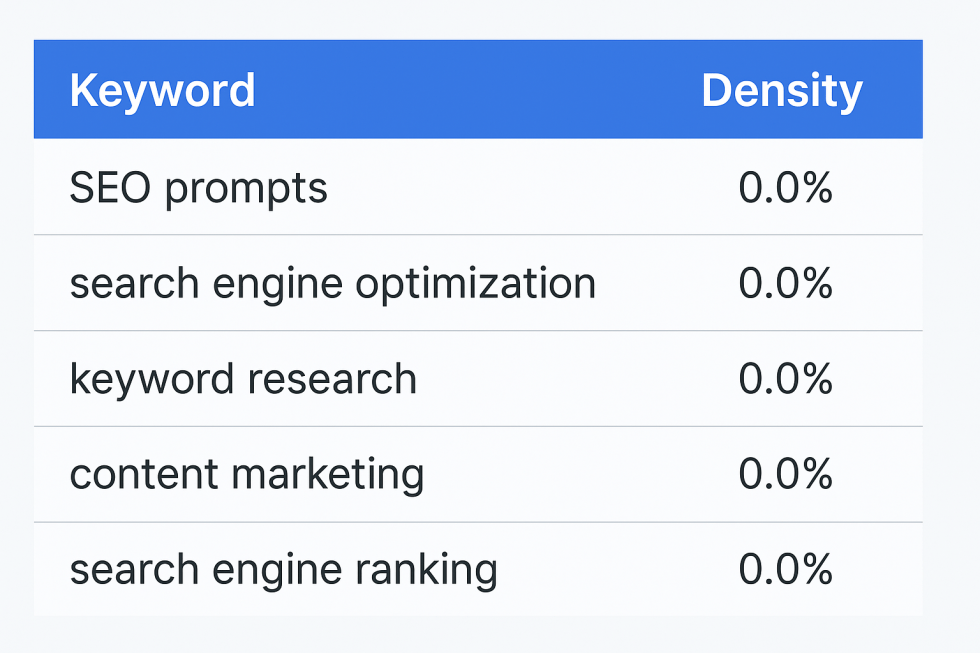
The modern digital landscape demands exceptional user experiences to engage visitors, drive conversions, and support brand identity. This article examines key UX design principles in web development – usability, accessibility, desirability, findability, and value – and explains how to achieve effective UX through a structured process, the use of specialized tools, and ongoing measurement and optimization. Insights from experts such as Don Norman, Steve Krug, and the Nielsen Norman Group support a data-driven approach.
Companies like BKThemes enhance their custom solutions on platforms like Shopify, WordPress, and BigCommerce by following these principles. In addition, best practices for mobile-first and responsive design ensure consistent experiences across devices, while user research and WCAG accessibility standards help build inclusive websites. This guide is a trusted resource for web developers and designers committed to improving usability and engagement while driving tangible business results.
What Are the Core User Experience Design Principles in web development?
**UX **design is founded on principles that create a **good user experience **and generate positive outcomes. The core principles are **usability **, **accessibility **, desirability , findability, and value. Each plays a key role in guiding design decisions that result in intuitive, engaging interfaces.
How Does Usability Improve Website Effectiveness?
**Usability **means that a website is simple to navigate and use. A usable site features clear menus, fast load times, and predictable actions that help users complete tasks without frustration. Even a 1.0-second decrease in load time can boost customer satisfaction by up to 16%. Designers use **usability **heuristics defined by Jakob Nielsen to meet user expectations. Consistent layouts and clear call-to-action buttons improve workflows and usually lead to more conversions. Regular **usability **testing and user feedback identify issues early , ensuring straightforward navigation and minimal distractions.
Why Is Accessibility Critical for Inclusive Web Design?
**Accessibility **ensures that a website works for all users, including those with disabilities. By following **WCAG **standards—such as adding alt text to images, enabling keyboard navigation, and designing accessible forms—websites become legally compliant, expand market reach, and demonstrate strong corporate responsibility. Accessible sites not only help users with impairments but also produce cleaner code that benefits SEO and overall performance. Early incorporation of **accessibility **features prevents costly redesigns and improves **usability **for everyone. Accessibility in web development can play a crucial role in this process.
What Role Does Desirability Play in User Engagement?
Desirability measures the appeal and engagement level of a website. Visual design, tone, and brand style create an emotional response; an attractive **interface **encourages users to stay longer. Studies have shown that appealing design can boost engagement by 38%. Typography, color schemes, and the right balance of images and text contribute to a desirable experience. With higher trust and satisfaction, users are more likely to return, a crucial advantage in competitive markets.
How Does Findability Enhance User Navigation?
Findability helps users locate information quickly and efficiently. A well-planned website structure — featuring clear menus, breadcrumb trails, and search functions — makes it easier for search engines to index content and for users to find what they need. Organizing information hierarchically and using consistent labels reduces cognitive load. For e-commerce sites, clear product categories and filters enable users to quickly find items, enhancing satisfaction and conversion rates .
Why Is Value Important in UX Design?
Value is delivered when a website meets or exceeds user expectations through meaningful content, problem-solving features, and seamless interactions. Consistently delivering value builds trust and loyalty among users. Feedback-driven improvements and design refinements help ensure that every element serves a strategic purpose. In turn, high-value experiences drive repeat visits and recommendations, essential forSEO-strategies-how-to-enhance-your-online-presen/"> long-term success . Name design is also an important factor.
To summarize these principles :
| **Principle** | **Key Attribute** | **Benefit** | **Example** |
| Usability | Clear navigation | Improved task efficiency | Intuitive e-commerce site |
| Accessibility | WCAG compliance | Inclusive user experience | Alt text for images |
| Desirability | Aesthetic design | Enhanced user engagement | Visually appealing layout |
| Findability | Organized information hierarchy | Fast information retrieval | Breadcrumb navigation |
| Value | Meaningful content | Increased user trust and loyalty | Quality blog content |
By integrating these principles, web developers create experiences that exceed user expectations and drive conversions.
How Does the UX Design Process Work in web development?
The **UX **design process is essential for successful projects. It involves research, planning, design, testing, and iteration. With each phase informed by user data and feedback, the design continuously improves to meet user needs.
What Are the Best User Research Methods for Web Projects?
**User research **is the first step in designing effective **UX **. Qualitative methods such as interviews, focus groups, and field observations provide detailed insights into user behavior, while quantitative methods including surveys and analytics highlight trends. Both approaches help identify needs and pain points. Insights from research informSEO-concepts-for-digital-growth/"> user personas and journey maps, ensuring the site reflects real user behavior.
How Is Information Architecture Structured for Better UX ?
Information architecture (IA) is about organizing site content logically. Creating site maps, categorizing content, and developing a clear hierarchy are key steps. A well-structured IA reduces cognitive load by breaking information into manageable chunks, leading to higher overall satisfaction. Testing methods like card sorting ensure that the final structure meets user expectations.
What Are Effective Wireframing and Prototyping Techniques?
Wireframing provides a basic framework for the website design, focusing on layout and key elements without final design details. Prototyping simulates user interactions so designers can test functionality and refine flows before full development. Tools like **Adobe XD **and Sketch allow for rapid prototyping and iterative improvements. Early identification of **usability **issues prevents costly changes later in the process .
How Do Testing and Iteration Improve UX Outcomes?
Testing and iteration form a continuous cycle where design improvements are made based on **user feedback **. Methods such as remote testing, lab studies, and heuristic evaluations help identify problems. Data from task completion rates, time on task, and qualitative feedback guide refinements. This iterative approach ensures that designs are truly user-centric and aligned with business goals .
Which UX Design Tools Are Essential for Web Developers?
Selecting the right tools is critical to a successful UX design process . These tools support prototyping, collaboration, and testing, ensuring that final products meet high standards of **usability **and aesthetics.
What Are the Benefits of Using Figma for UX Design?
Figma is a cloud-based design tool that supports real-time collaboration, making it popular among **UX **teams. It allows multiple stakeholders to work simultaneously, reducing feedback cycles. With support for vector graphics, interactive prototypes, and a browser-based **interface **, Figma is platform agnostic. Its plugin ecosystem further enhances productivity by integrating with tools like Slack and Jira, maintaining design consistency across projects .
How Does Adobe XD Support UX Prototyping?
**Adobe XD **provides an intuitive platform for both designing and prototyping user experiences. Its integration with Adobe’s Creative Cloud makes importing and editing assets seamless. Designers can simulate transitions, hover states, and voice interactions, allowing them to test and refine interactive prototypes efficiently. This streamlined workflow supports rapid iterations and precise feedback, leading to effective designs .
Why Choose Sketch for User Interface Design?
Sketch has long been a staple in the **UX **design community. Known for its powerful layer styles, symbols, and artboards, Sketch supports the creation of reusable design components. Its flexible export options benefit responsive design, and its extensive plugin ecosystem extends its functionality to **usability **testing and design handoffs. Although available only on macOS, Sketch remains an essential tool for user interface design.
A quick comparison of these tools :
| **Tool** | **Collaboration** | **Prototyping Features** | **Asset Management** | **Integration** |
| Figma | Real-time | Interactive prototypes | Centralized library | Slack, Jira, etc. |
| Adobe XD | Cloud sharing | Voice, auto-animate | Integrated with CC | Photoshop, Illustrator |
| Sketch | Plugins | Reusable symbols/artboards | Flexible export options | Extensive plugin ecosystem |
Each tool offers unique strengths that contribute to a comprehensive UX design process.
How Do Mobile-First and Responsive Design Principles Impact UX ?
Mobile-first and responsive design principles ensure websites adapt effectively across diverse devices. With the increasing use of mobile devices, designers must prioritize mobile experiences while maintaining consistency on larger screens.
What Are the Key Principles of Mobile-First Design?
Mobile-first design means starting with the smallest screen and focusing on essential elements. By stripping away non-critical content, designers create layouts that load quickly and remain accessible even on slower networks. Testing on mobile devices ensures that core user tasks can be completed efficiently before scaling the design for desktops.
How Does Responsive Design Adapt to Different Devices?
Responsive design employs fluid grids, flexible images, and media queries to adjust a website’s layout based on screen size. For example, navigation menus may collapse into a hamburger icon on small devices and expand on larger ones. This adaptability minimizes user friction, reduces bounce rates, and maintains consistent branding and usability .
What Are Examples of Successful Mobile-First UX Implementations?
Many successful websites have embraced mobile-first strategies. E-commerce sites like Amazon and eBay optimize search, reviews, and purchase processes on smartphones. Similarly, news sites such as BBC streamline content to fit mobile readers. These practices result in higher engagement and conversion rates, with startups and niche sites benefiting from a distinct, mobile-optimized presence .
How Can You Measure and Optimize UX Success in web development?
Measuring **UX **success is key to understanding and improving website performance. By assessing key performance indicators (KPIs) and using testing tools, developers can refine designs for better business outcomes .
What Key Performance Indicators (KPIs) Track UX Effectiveness?
Important KPIs include task success rate, error rate, time on task, and user satisfaction scores. A high task completion rate and low error rate indicate effective **usability **, while metrics like bounce and conversion rates offer broader insights. Regular monitoring of these indicators helps prioritize improvements and validate design changes.
How Does Conversion Rate Optimization (CRO) Relate to UX ?
CRO focuses on increasing the number of users completing a desired action. **UX **design directly influences CRO by reducing friction through streamlined checkout processes, prominent call-to-action buttons, and easy-to-use forms. Continuous testing and iterative adjustments based on **user feedback **support improvedSEO-strategies-how-to-enhance-your-online-presen"> conversion rates over time.
What Tools Help Monitor UX Performance?
Digital tools like Google Analytics, Hotjar, UserTesting, Crazy Egg, and Lighthouse provide insights into visitor behavior and website performance. These tools capture quantitative data such as navigation paths and qualitative feedback through heat maps and user recordings, helping developers optimize the UX iteratively.
What Are the Best Practices for Accessibility in UX Design?
Ensuring accessibility in **UX **design means creating websites that work for everyone. Following guidelines like **WCAG **makes content available to users with varying abilities and supports better overall design.
How Do WCAG Guidelines Shape Accessible Web Design?
**WCAG **guidelines offer a framework to enhance web **accessibility **by addressing perceivability, operability, understandability, and robustness. Designers follow these guidelines to include text alternatives, adaptable content, and clear navigation. Simple practices like using alt text and maintaining sufficient contrast ensure that websites are inclusive and accessible .
What Are Common Accessibility Testing Methods?
Developers use automated tools (such as Axe or WAVE) and manual testing techniques (like keyboard navigation and screen reader checks) to evaluate accessibility . In-person user testing with people who have disabilities further reveals issues that may not appear in automated tests. Ongoing testing throughout development helps catch and resolve **accessibility **barriers early.
How Can Designers Ensure Inclusive User Experiences?
Designers achieve inclusivity by using semantic HTML, customizable elements (like scalable fonts and adjustable colors), and regular testing with assistive devices. By educating themselves on best practices and involving users with disabilities early in the process, designers can create holistic solutions that benefit all users.
How Does User Research Influence UX Design Decisions?
**User research **provides crucial insights that shape the direction of design. By understanding behavior, preferences, and pain points, designers can create experiences that align with real user needs .
What Are Effective Techniques for Conducting User Interviews?
User interviews, which use open-ended questions and active listening, uncover in-depth insights about how users interact with a website. These conversations reveal emotional responses and contextual details that quantitative data might miss. The findings support the creation of accurate user personas, ensuring design decisions are driven bySEO"> genuine needs .
How Do Surveys Help Understand User Needs?
Surveys quickly gather large volumes of data on user satisfaction, feature usage, and potential improvements. Well-designed surveys combining quantitative ratings with qualitative feedback provide actionable insights. The results help validate assumptions and inform iterative design changes, such as simplifying a complex checkout process .
Why Are User Personas Important in web development?
User personas are data-driven profiles that capture the needs, behaviors, and goals of target users. These personas help teams maintain a user-centric focus, guiding design and feature prioritization throughout the development process. By ensuring that the website resonates with its intended audience, user personas contribute to a more engaging and effective user experience.�
📧 Stay Updated
Get the latest web development tips and insights delivered to your inbox.




